Article: Cleaner Fuels for Ships Provide Public Health Benefits with Climate Tradeoffs
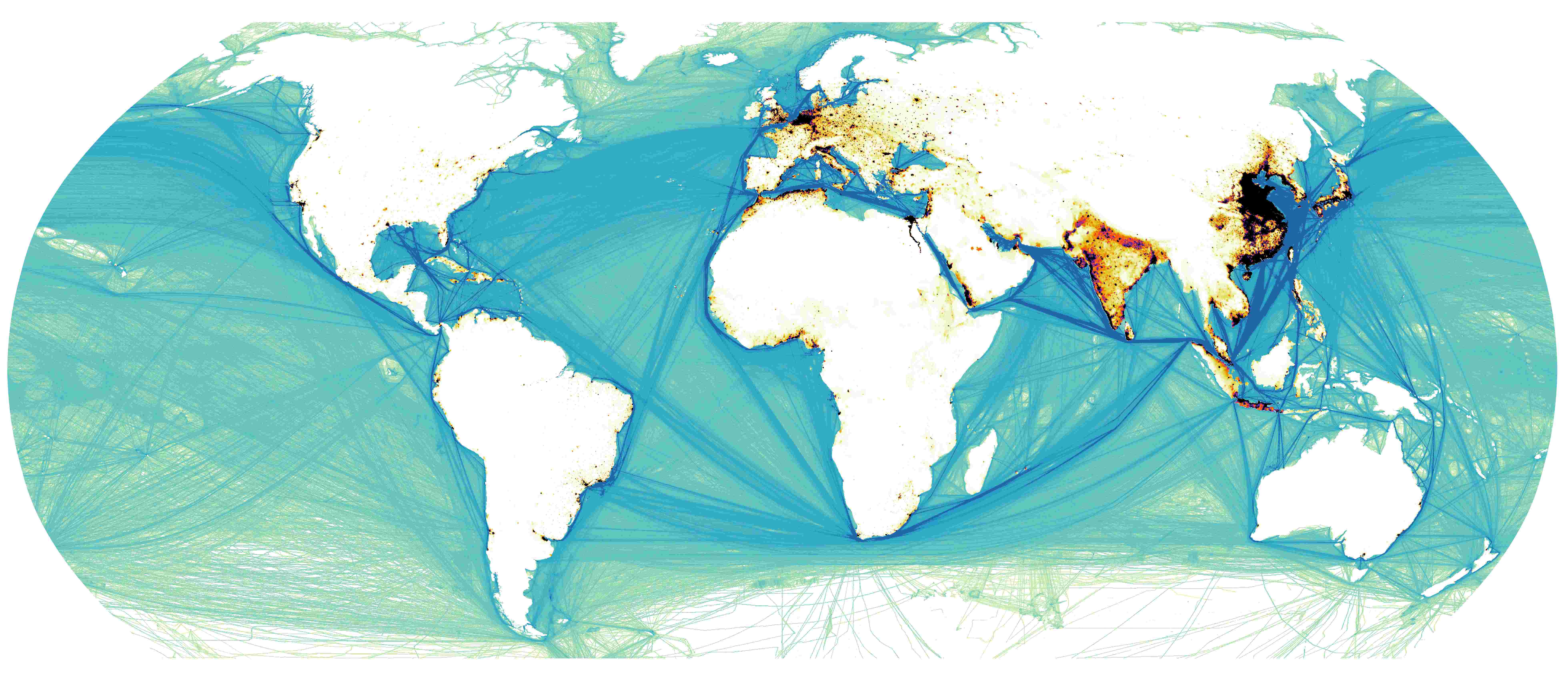
In 2018, an important paper title "Cleaner fuels for ships provide public health benefits with climate tradeoffs" was published in Nature Communications. This paper looked at the health impacts associated with air pollution from ships operating on the world's oceans. Specifically, the paper evaluated the premature mortality and childhood asthma impacts of particulate matter pollution from these ships. Ships currently burn a type of fuel (heavy fuel oil) that contains very high levels of sulphur, and it is this sulphur that causes the particulate matter pollution. When weather patterns blow this pollution overland, human health is affected.
Frequently Asked Questions
Why is this work important?
How do we know where ships are?How much pollution do ships emit?
What are cleaner ship fuels?
Ships spend most of their time crossing oceans, how does pollution travel in the atmosphere?
How do ships contribute to lung cancer, cardiovascular disease and asthma?
What are the health impacts from ships?
What are the benefits of ships using cleaner fuels?
Do ship emissions only affect health?
Do these results affect everyone equally?
What else can be done to reduce the impact of ship emissions?
I want to read the whole paper, where can I find it?
I have more questions, who can I ask?
Why is this work important?
Ships carry over 90% of the world's cargo. Global commerce depends on shipping for the efficient, reliable, and cost-effective transportation of goods around the world. While ships provide enormous benefit to society, the fuels that they burn are often dirty and result in high levels of pollution.
This paper presents the most comprehensive, up to date estimate of the global health impacts of air pollution from ships. Using state of the art models of ship traffic, emissions, meteorology, atmospheric chemistry, and health, we show that air pollution from ships currently contribute to over 400,000 premature deaths each year.
The International Maritime Organisation (IMO) have mandated that starting in 2020, ships must burn cleaner fuels. This work shows that these cleaner fuels will likely result in over 135,000 avoided deaths from lung cancer and cardiovascular disease.
This paper presents the most comprehensive, up to date estimate of the global health impacts of air pollution from ships. Using state of the art models of ship traffic, emissions, meteorology, atmospheric chemistry, and health, we show that air pollution from ships currently contribute to over 400,000 premature deaths each year.
The International Maritime Organisation (IMO) have mandated that starting in 2020, ships must burn cleaner fuels. This work shows that these cleaner fuels will likely result in over 135,000 avoided deaths from lung cancer and cardiovascular disease.
How do we know where ships are?
In conducting these types of analyses, the first thing we need to understand is shipping activity. We need to know where ships are, how they are operating, what type of fuel they are burning, and general characteristics about their specifications. Luckily, two datasets are available with this kind of information. The first is called the Automatic Identification System (AIS), which is a satellite based system that tracks ship activity globally. The second is a dataset compiled by IMO that includes all details about each ship. Those datasets allow us to map ship activity as shown in the video and the image of ship traffic below.
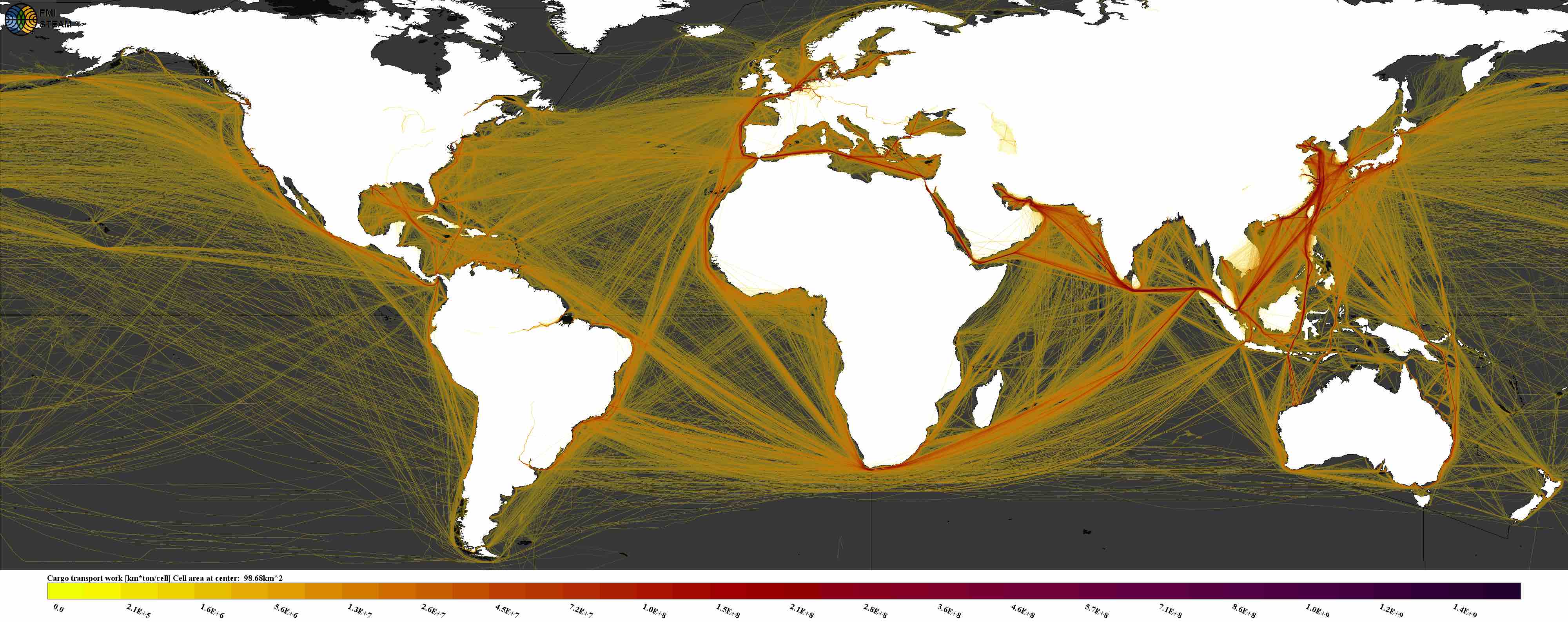
Source: © Finnish Meterological Institute
How much pollution do ships emit?
Since we know each ship's location, fuel type, and characteristics, we can translate that into an emissions profile. And because we know the location of every ship, we can map those emissions geospatially to create a "geospatial emissions inventory." Below is an image that shows the sulphur dioxide profile (in megagrams per grid cell). Our grid cells are 10 km x 10 km, and represent the highest modeling resolution ever conducted for this type of work. (You may also notice light patches around the US, Canada, and parts of Europe -- these represent areas where existing regulations already restrict emissions from ships that are within a certain range of the coast.)
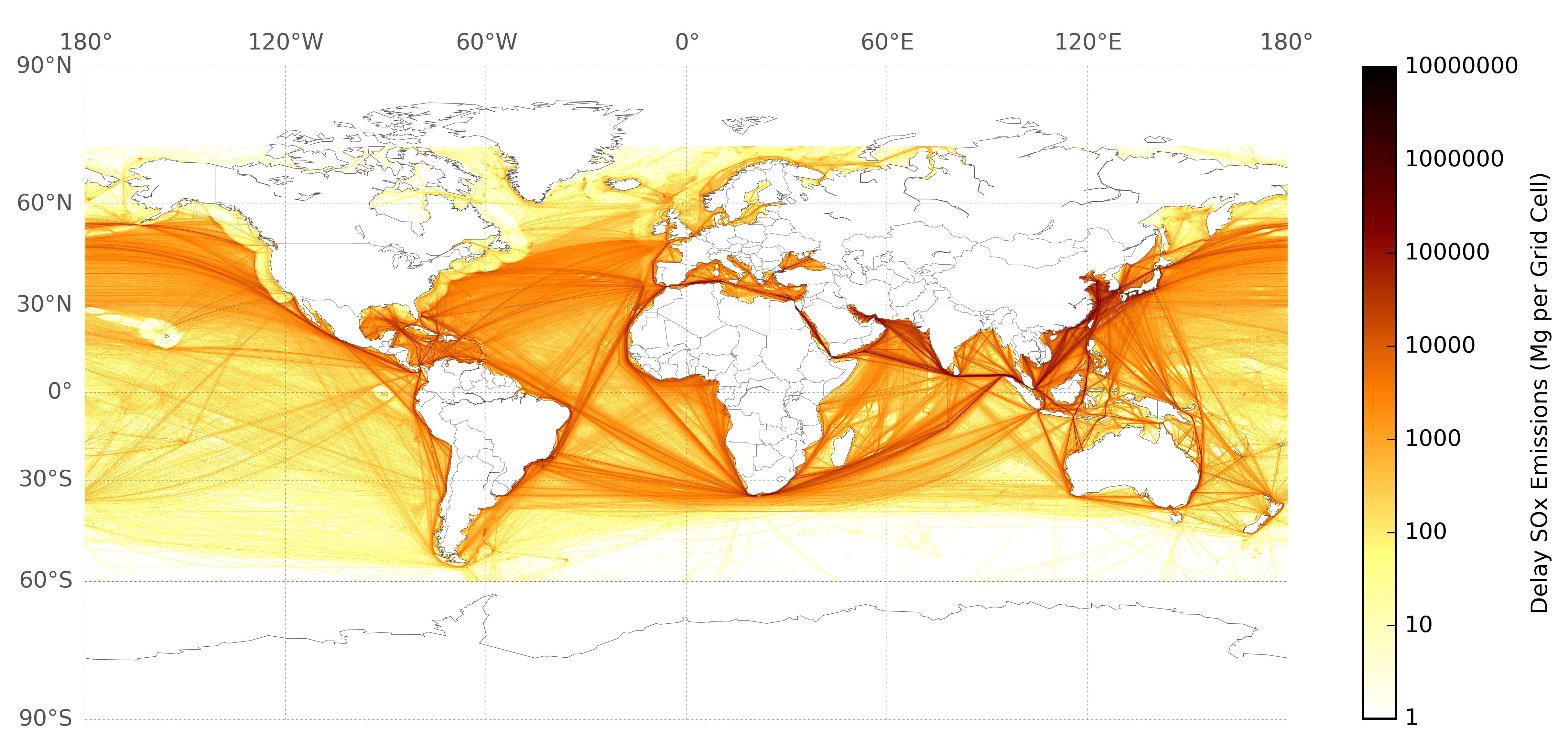
What are cleaner ship fuels?
Ships currently burn a type of fuel (heavy fuel oil) that contains very high levels of sulphur, and it is this sulphur that causes the particulate matter pollution.
The paper looked at the impacts of regulations proposed by the International Maritime Organization (IMO) to regulate the amount of sulphur in heavy fuel oil. The IMO recently approved regulation that would reduce sulphur in fuel oil by 80%. Ships have the option of switching to these cleaner fuels or continue using dirty fuels and use technology to "scrub" pollutants from the exhaust gases.
Ships spend most of their time crossing oceans, how does pollution travel in the atmosphere?
Ship emissions don't stay over water. Complex weather patterns move these emissions over land. We use models from the Finnish Meteorological Institute to predict what the concentrations of pollution will be over land. The video below shows the level of sulphates over land for an example month (March). The image on the left represents the case where the clean fuel regulations are not put into place, and the image on the right represents the case where the clean fuel standards are put into place. You can see in these two images the impact over land of the new regulations.
Source: © Finnish Meteorological Institute
The overall changes in concentrations over land due to the new regulations are also calculated. In the images below, the image on the left represents the contributions of ships to the overall particulate matter concentrations over land for 2020. The image on the right shows how concentrations of particulate matter (PM) are reduced (negative, more blue) over land when the clean fuel regulations takes effect.
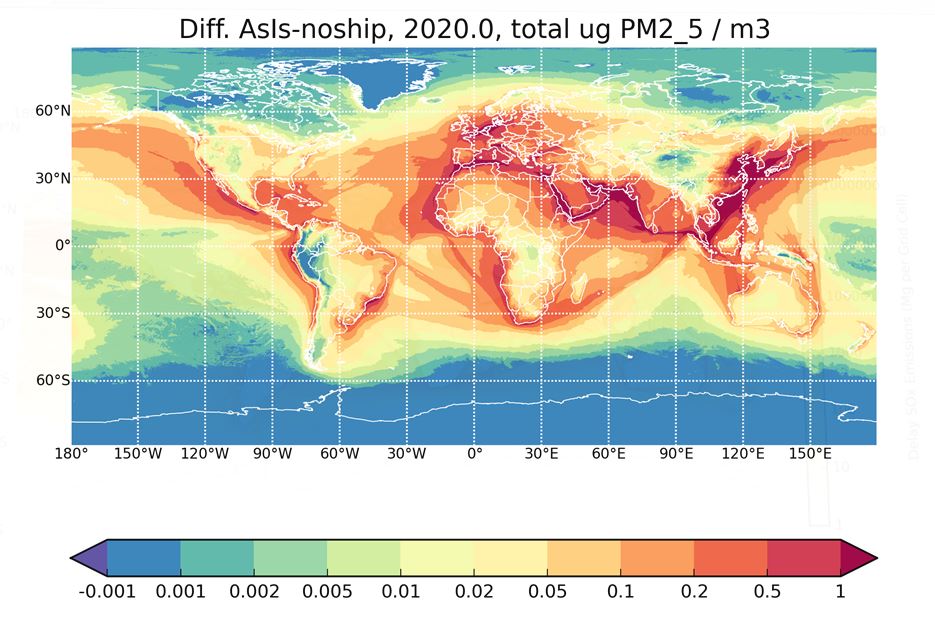
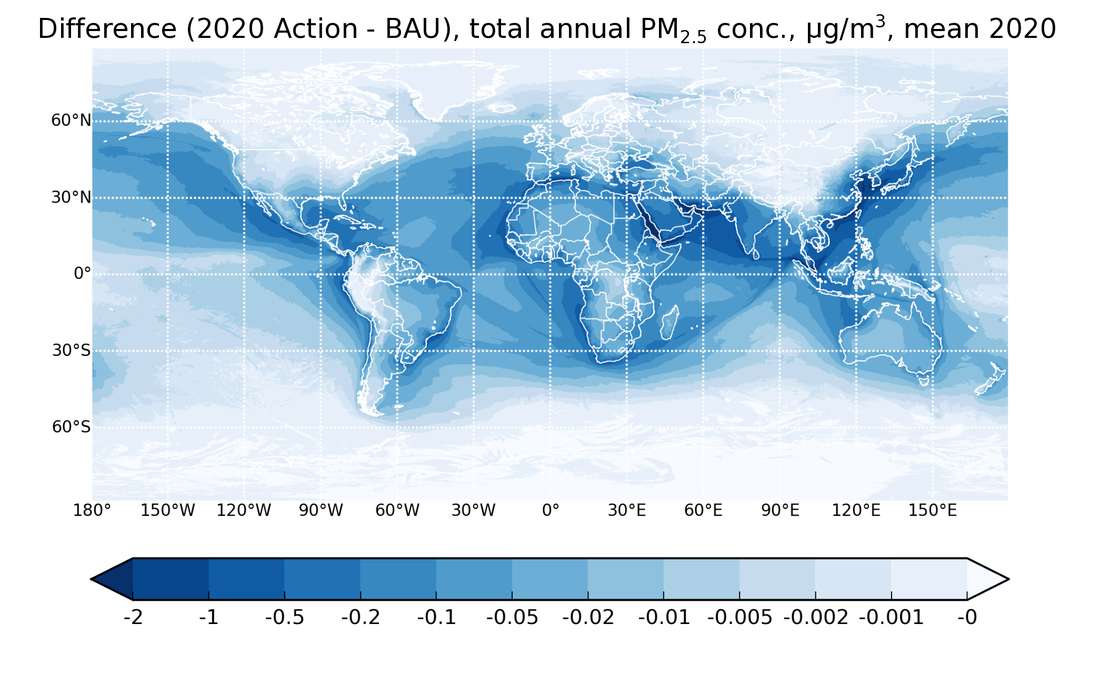
How do ships contribute to lung cancer, cardiovascular disease and asthma?
These particulate matter concentrations from ships over land lead to health impacts. As these tiny particles (< 2.5 µm) are inhaled, they travel deep into the lungs, causing cardiovascular disease and lung cancer, and exacerbating asthma symptoms.
What are the health impacts from ships?
Using epidemiological assessments that relate mortality and morbidity to air pollution concentrations, we are able to calculate the expected premature mortality and childhood asthma rates due to emissions from ships. We estimate 403,000 premature deaths each year from lung cancer and cardiovascular disease attributed to particulate matter from ships. Furthermore, we estimate 14 million cases of childhood asthma attributed to by particulate matter from ships
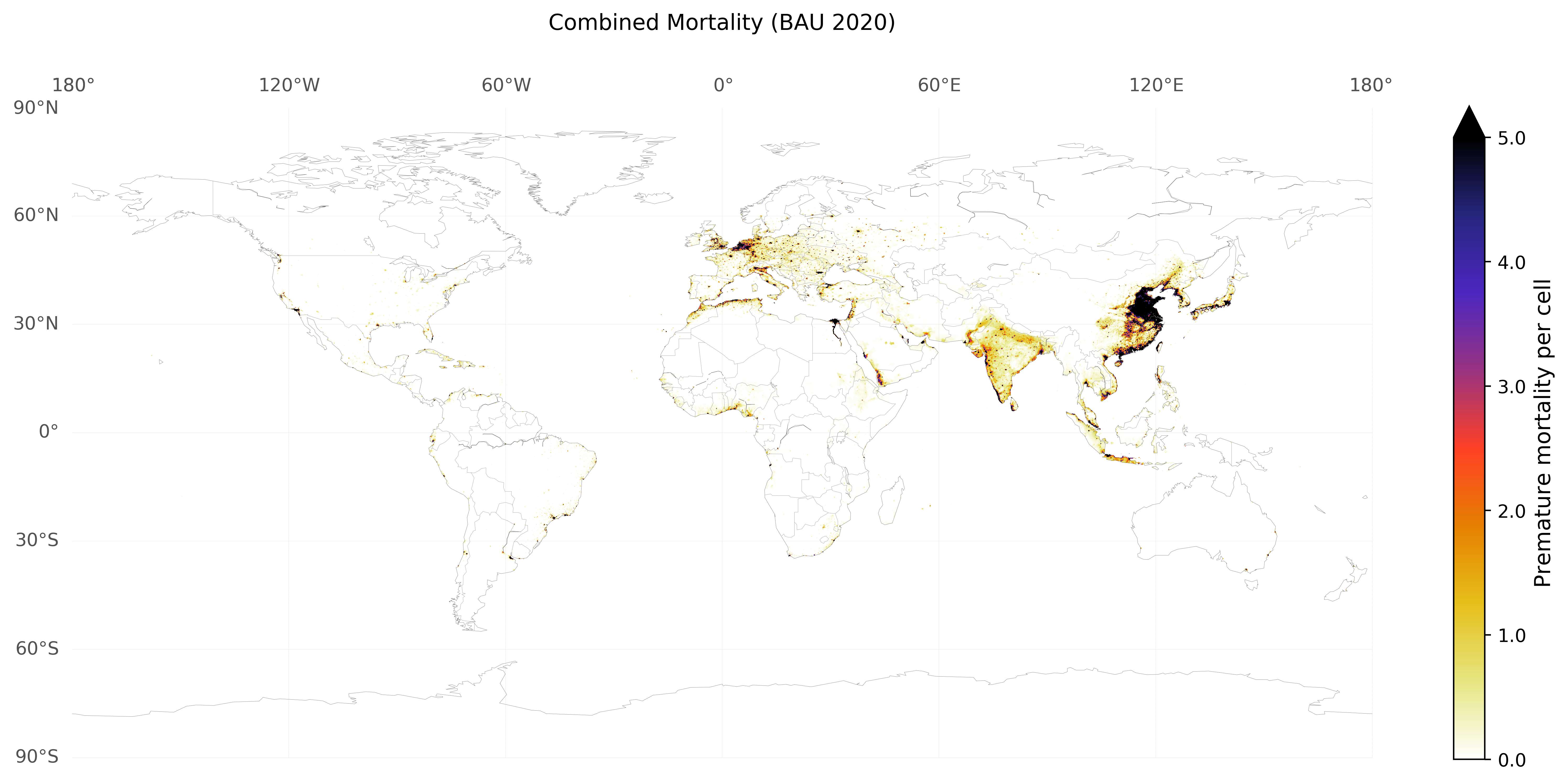
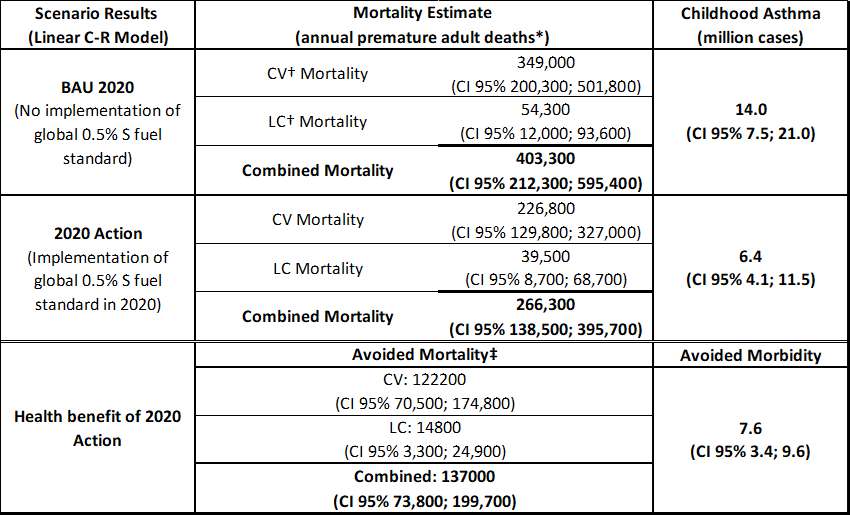
What are the benefits of ships using cleaner fuels?
Given these problems, if we institue the new regulations, we are expecting to see some health benefits. The table above shows 137,000 avoided lung cancer and cardiovascular disease deaths due to ships using cleaner fuels, and 7.6 million avoided cases of childhood asthma. The figure below shows the avoided mortality from the IMO taking action in 2020.
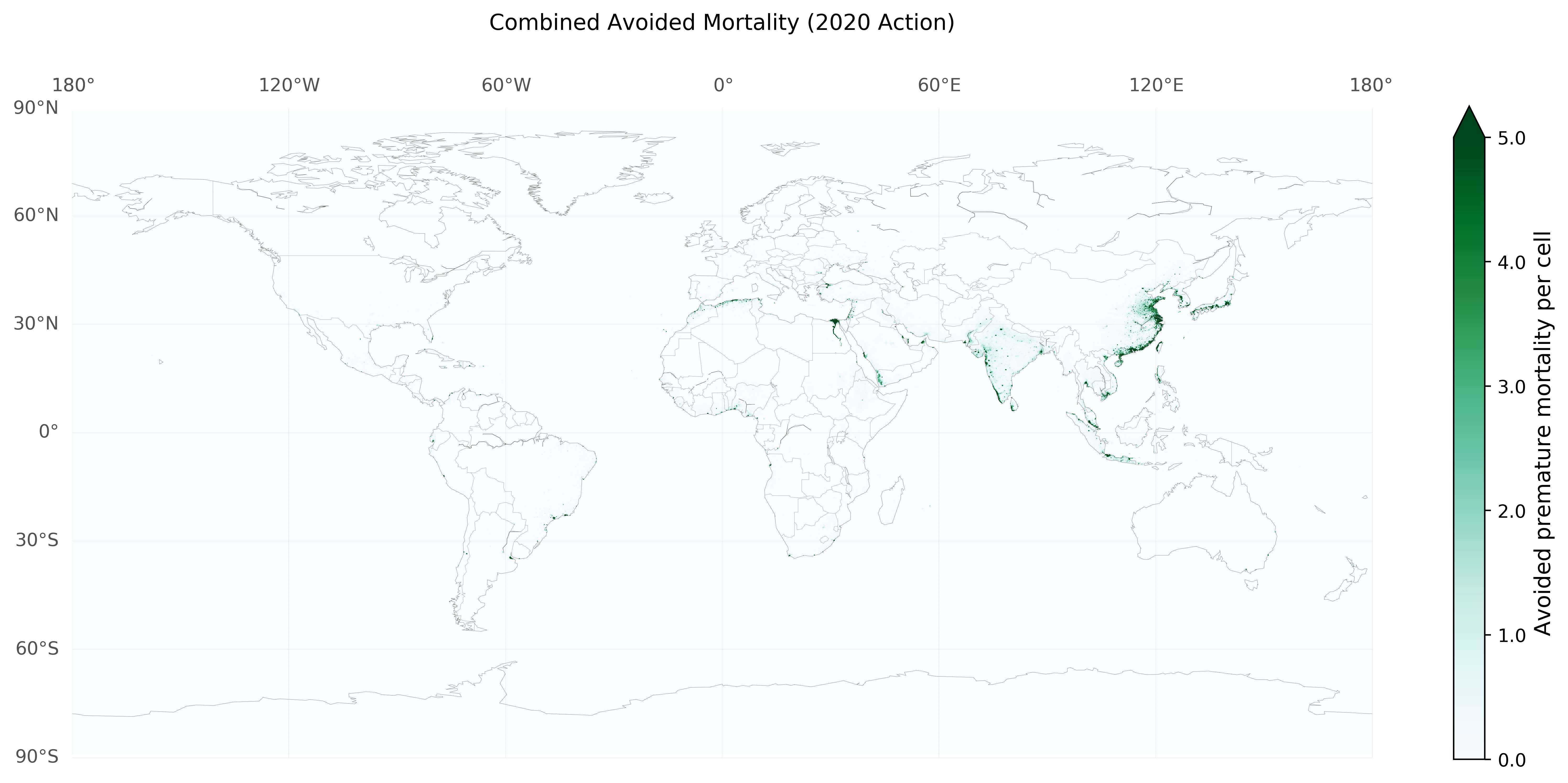
Do ship emissions only affect health?
The removal of sulphur from fuel (and therefore from the atmosphere) will have significant human health benefits. But that is not the end of the story. There are other environmental tradeoffs that need to be considered. Because sulphates in the atmosphere form aerosols, they have the interesting properties of reflecting sunlight and forming clouds. Both of these effects increase the albedo of the Earth (its reflective capacity), and therefore act to "cool" the planet. Removing this pollution from our air makes us healthier, but also increases the planet's temperature by increasing what is called 'radiative forcing'. We use climate models to estimate the size of this forcing. The figure below shows our results -- at a noticably more course resolution due to the complexity of these models. The darker red areas are where the radiative forcing reductions are greatest when clean fuel regulations are implemented (measured in milliwatts per square meter). We find that the radiative forcing effects due to removal of sulphur from ship fuel could have significant consequences from a climate change perspective. Because of this, we believe that reductions of sulphur in fuel must also be accompanied by aggressive policies to reduce greenhouse gas emissions from ships (to offset the climate warming impact of the sulphur reductions).
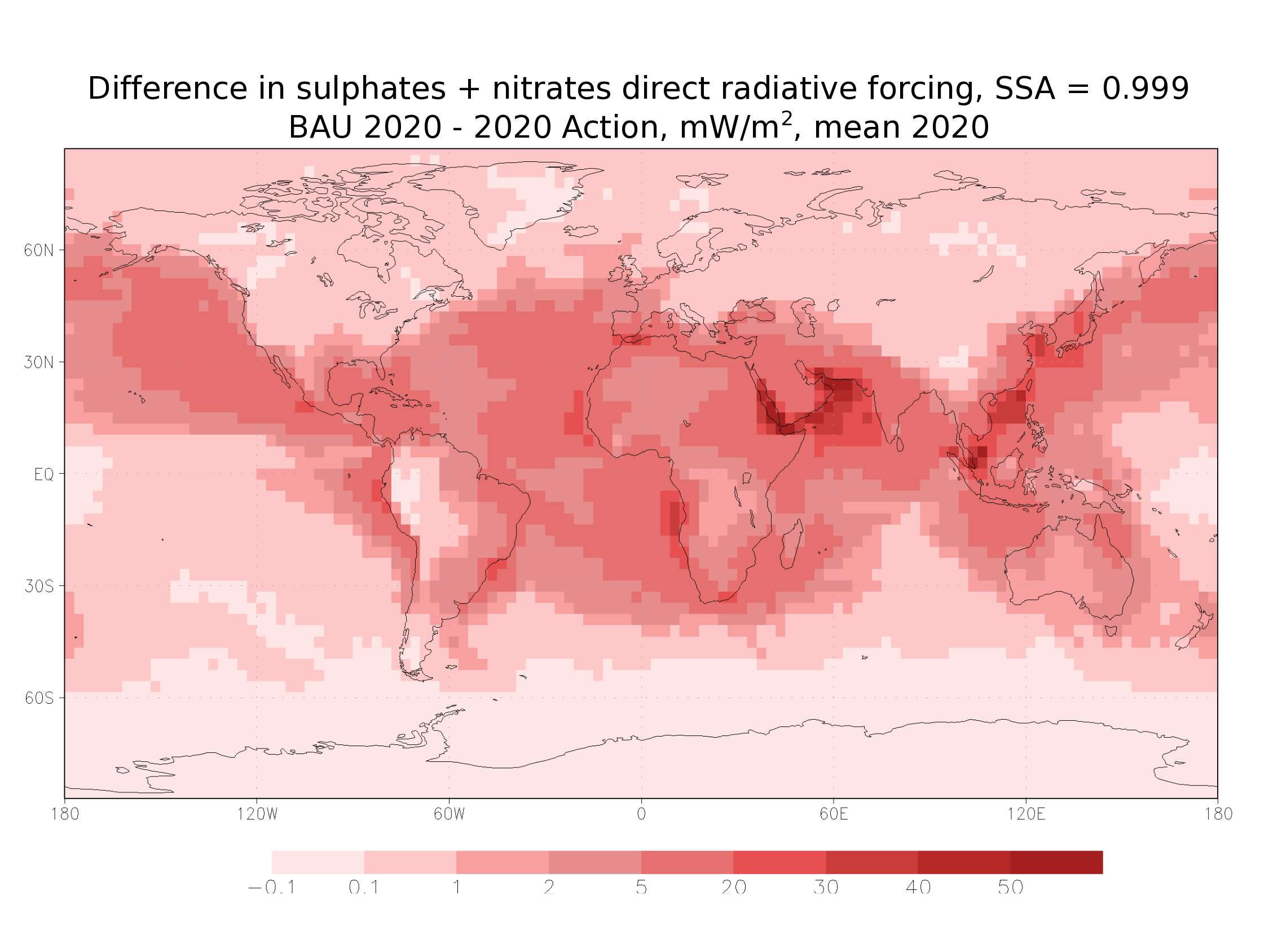
Do these results affect everyone equally?
So far, we have presented only global impacts. But, given the resolution of our modeling, we can hone in on any area of the globe and explore the impacts at a more local level. For example, the animation on the right shows SO2 emissions from ships outside of Singapore. These emissions are translated into sulphate concentrations over land locally, as shown in the first image below that compared a 'business as usual' case with a 'clean ship fuel' case. And, those sulphate concentrations then lead to premature mortality for the region, also shown below.
Source: © Finnish Meteorological Institute
What else can be done to reduce the impact of ship emissions?
This research breaks new ground in our understanding of the impact of ship emissions on human health. Our work quantifies the human health benefits of reducing sulphur from ship fuel, and those benefits are significant. However, there are negative climate impacts that need to be addressed, and policmakers must aggressively go after reducing not only sulphur in ship fuel, but also greenhouse gas reductions in shipping altogether. This is not an "either-or" proposition, but a "both-and" proposition.
I want to read the whole paper, where can I find it?
The citation for this work is
Sofiev, M., Winebrake, J.J., Johansson, L., Carr, E.W., Prank, M., Soares, J., Vira, J., Kouznetsov, R., Jalkanen, J.-P., Corbett, J.J., 2018. Cleaner fuels for ships provide public health benefits with climate tradeoffs. Nat. Commun. 9, 406. doi:10.1038/s41467-017-02774-9
This work is available free of charge and for all to read from Nature Communications
I have more questions, who can I ask?
Correspondence and requests for materials regarding the paper should be directed to the corresponding authors listed on the article, found here
Questions regarding this website should be directed to
Questions regarding this website should be directed to


